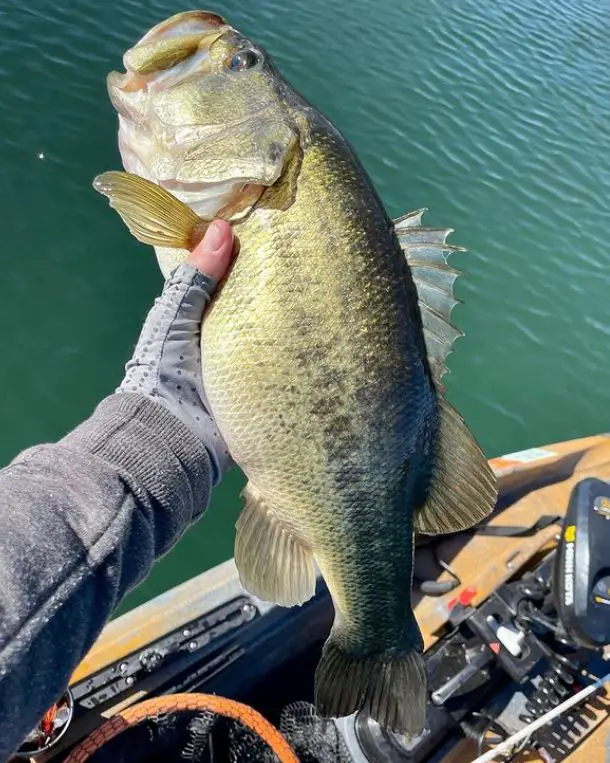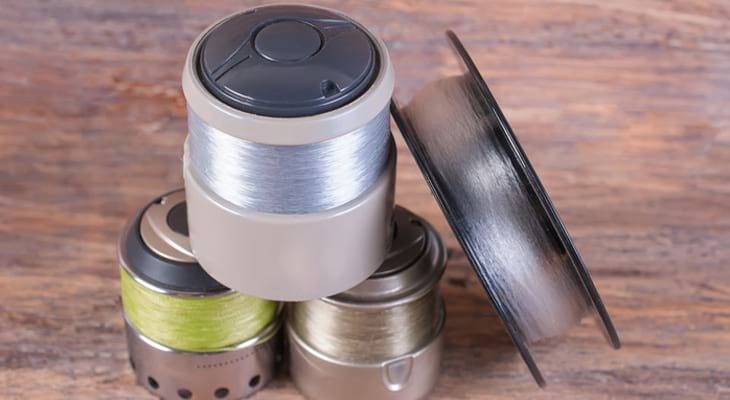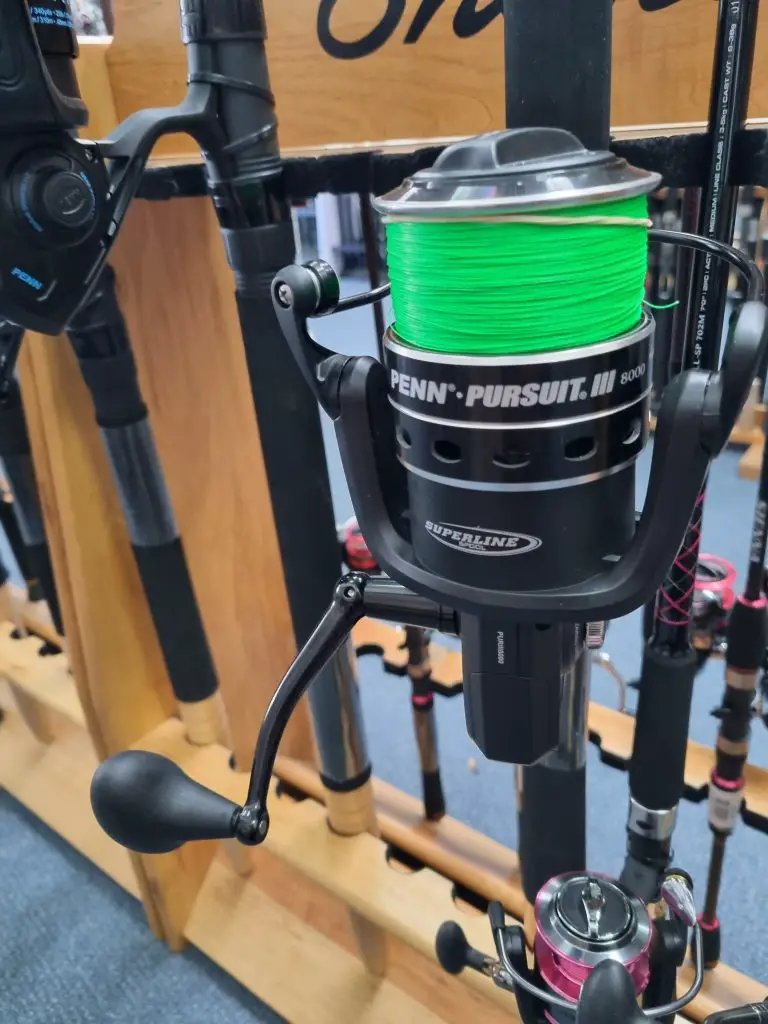The best colors for freshwater fishing are clear, green, and yellow because they blend in with the water. The type of fishing line—braided, fluorocarbon, or monofilament—also matters. The goal is to find a line that will camouflage with the water environment so you can sneak up on fish.
When you’re picking out the best fishing line for your freshwater fishing expeditions, there are a few different factors you want to think about. For example, you want to have a line that is strong enough for the species you are catching. Color is another important factor when picking out fishing lines for freshwater fishing.
There is still debate over how well freshwater fish can see color, but to make sure you are getting the biggest edge when fishing, here is your guide to selecting the right color fishing line.
| Fish Species | Susceptible to Visible Lines? | Best Color Fishing Line |
|---|---|---|
| Largemouth Bass | Yes | Fluorocarbon (clear) |
| Smallmouth Bass | Yes | Fluorocarbon (clear) |
| Trout | Yes | Fluorocarbon (clear) |
| Walleye | Yes | Fluorocarbon (clear) |
| Northern Pike | Moderate | Fluorocarbon (clear) |
| Muskellunge (Muskie) | Moderate | Fluorocarbon (clear) |
| Catfish | Moderate | Fluorocarbon (clear) |
| Crappie | Moderate | Fluorocarbon (clear) |
| Bluegill | Moderate | Fluorocarbon (clear) |
| Perch | Moderate | Fluorocarbon (clear) |
Table of Contents
What Colors Can Freshwater Fish See?
Scientists aren’t sure exactly how fish see color. Most fish have color cones in their eyes, so they have the anatomy to see color. Some fish can even see more colors than humans because they have ultraviolet receptors in their eyes.
It’s hard to say which colors freshwater fish see definitively because a lot depends on various factors. The factors affecting a fish’s color vision include:
- The species
- The water depth
- The water clarity
- If it is a predator or prey fish
Let’s break it down by species. Largemouth bass, which are predator fish that live in shallow waters during part of the year, can see a few different colors. They are great at telling apart red, blue, and green. However, very dark blue and black look the same to them, as do white and yellow.

Freshwater fish such as perch and sauger see light colors such as red, orange, and yellow. In general, smaller fish that live closer to the surface tend to have better color vision.
While the nuances of fish color vision depend on the species of freshwater fish you are trying to attract, most common freshwater fish can see light colors. They struggle more with telling darker shades apart. All this is assuming clear water conditions. Visibility is often bad for fish in freshwater because stagnant water tends to be murkier.
What Colors Are Visible at Different Depths?
Whether you are talking about freshwater or saltwater, color changes as you go underwater. Water absorbs and refracts light rays. All colors will look paler and washed out underwater, especially the deeper and further away from a light source you go.
Colors with longer wavelengths, such as red, orange, and yellow, lose visibility first. This happens because longer wavelengths have less energy, so they dissipate faster.
Blue is the color that is visible in the deepest water. It is visible for depths of over 100 feet! However, many fish cannot distinguish darker shades, so they can’t tell apart dark blue, navy, and black.

Are Freshwater Fish Sensitive to Colored Fishing Line?
In fishing spheres, debates still rage about whether or not the color of the fishing line matters for freshwater fish. Some people say that it doesn’t, and it’s just part of a fisherman’s superstition to choose the right line. Scientists are still debating to what extent fish can see color.
However, many experienced anglers say freshwater fish are line-shy, especially species such as trout and salmon. It’s better to be safe than sorry, which is why fishermen recommend getting a line that is as invisible as possible. While you want your salmon lure to be visible, you don’t want your line to alert the salmon that it’s not getting a free meal.
The Best Color Fishing Line for Freshwater Fish
The best color fishing line for freshwater fishing is a fishing line that will blend in with the surrounding water. Most water in rivers, lakes, and ponds is a little brackish and tinged green, so you want a fishing line that will camouflage will that.
Before we get into the best color, remember that not all fishing line is the same. Three main types of fishing lines differ in terms of refracting properties. In order from least to most visible, they are:
That doesn’t mean fluorocarbon is always the best choice. In certain situations, it is the most visible. For example, braided line camouflages better in muddier conditions while the sheen of fluorocarbon, which is invisible in clear water, stands out.
Here are some of the best colors for fishing in freshwater.

Clear
When in doubt, buy clear fluorocarbon or filament for fishing. Clear fishing line is completely see-through, so you won’t have to worry about the fish seeing your line. Anglers who chase easily spooked species, such as walleye, swear by this color.
However, look at the water conditions before reaching for your trusty clear fishing line. The clear fishing line stands out like a beacon in muddy, brackish waters.

Green
Green is the best color for freshwater fishing for a few reasons.
Green is the closest to the natural color of most freshwater bodies of water. Due to the presence of algae and other organisms in the water, freshwater tends to have a greenish tinge, unlike the blue color of the ocean.
Many fish species have the most trouble seeing green, while they can easily identify light colors such as pink or orange.
For those reasons, green fishing line camouflages in the water easily.

Yellow
The choice of yellow fishing line may surprise you. However, a hefty yellow monofilament blends in with muddy waters easily. Plus, yellow is easy for fishermen to see; sometimes, that’s what you need if you have multiple lines out and have to tell which one is biting. However, yellow might be too risky if you are fishing for a skittish fish species.

Final Thoughts
Green, yellow, or trusty clear fishing lines work best for more brackish freshwater fishing. The best color for freshwater fishing depends on the species, water clarity, and depth.
